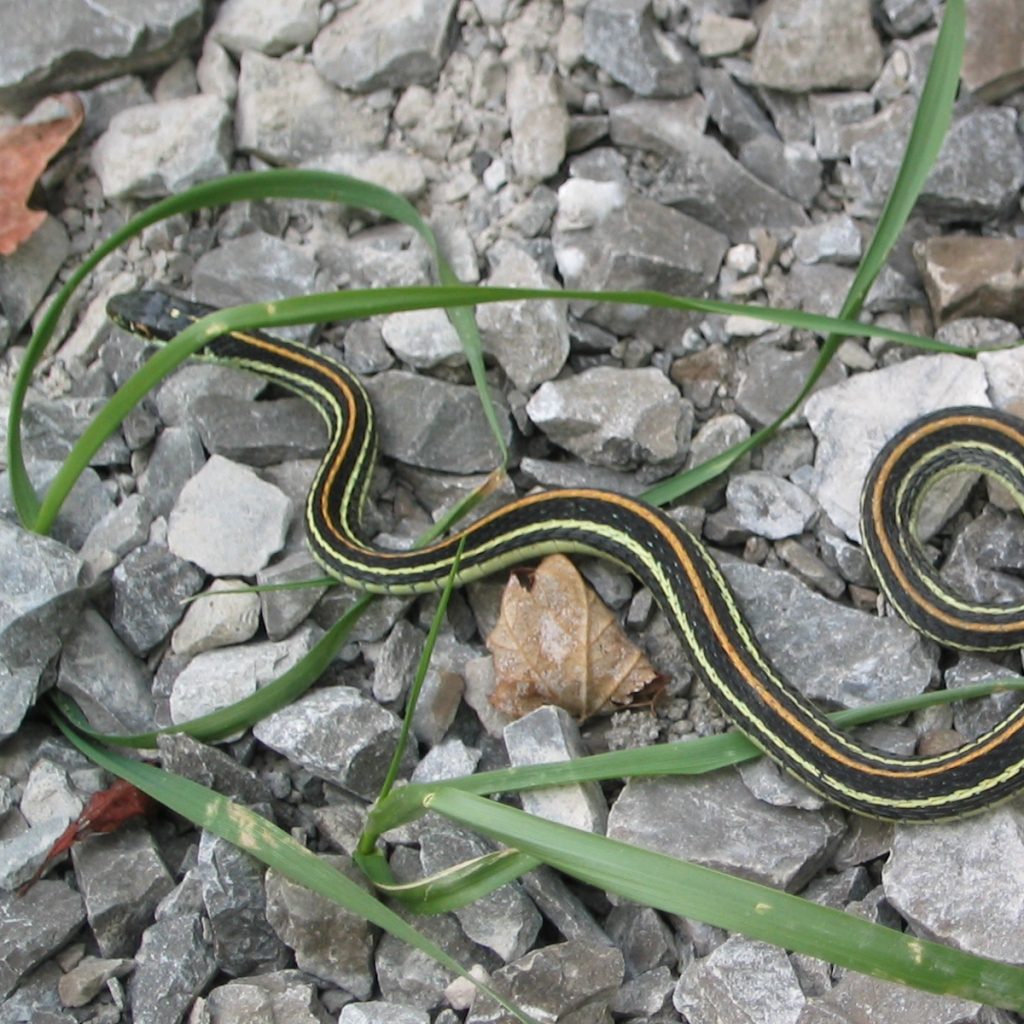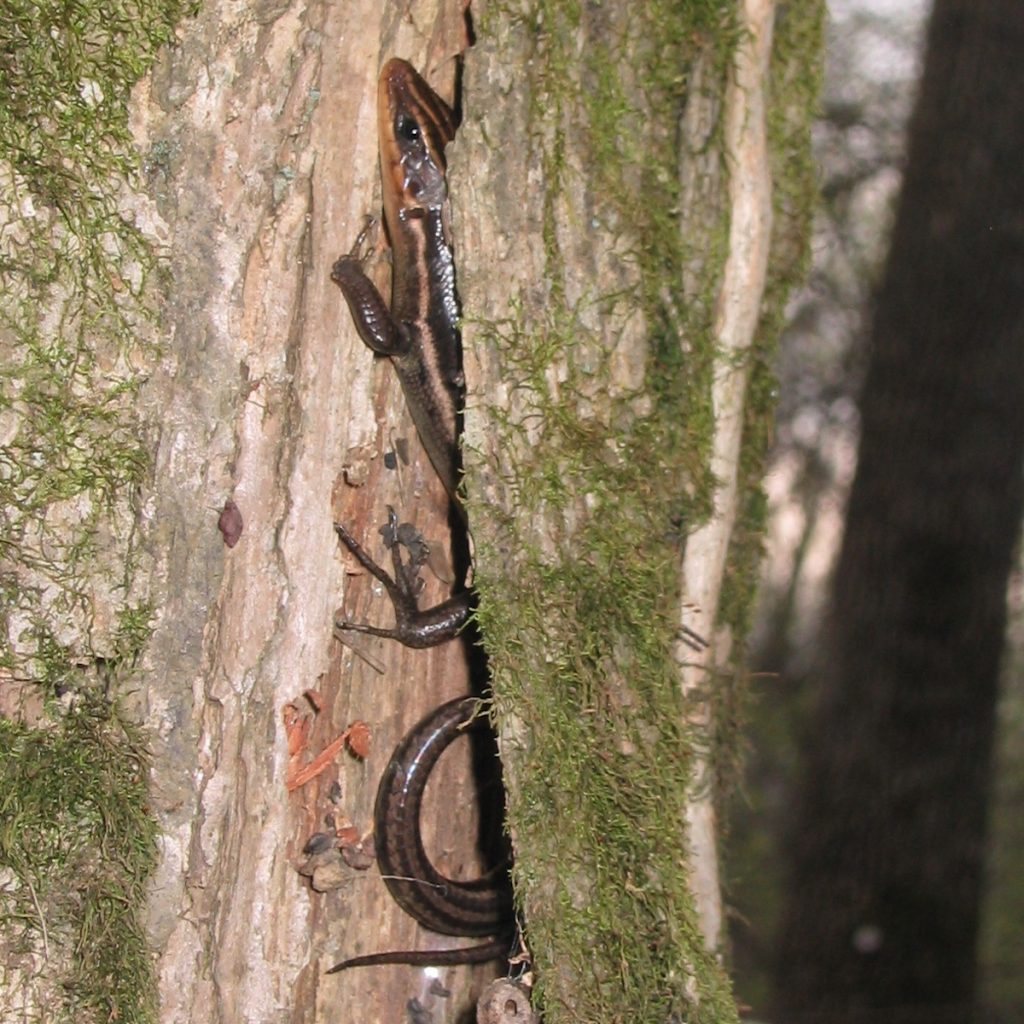Many species of reptile and amphibian undertake seasonal migrations, though typically not very long distance.
Many Ambystoma salamanders migrate to breeding ponds en masse with the first “warm” rains (~50F) in the spring. Hundreds of individuals may enter the pond on a single night. Herpetologists use this habit to their advantage, installing fences around a pond with pitfall traps that the salamanders fall in to. Learn more about our research on pond breeding salamanders.
One of the best known reptile and amphibian migrations in Illinois takes place each spring and fall across “Snake Road.”
Snake Road separates the Pine HIlls of the Ozark Uplift from LaRue Swamp, of the Coastal Plain. Approximately 50 species of reptile or amphibian inhabit this area and many migrate between hibernacula in the hills and summer habitat in the swamp.
Because of the high number of animals traversing the road and threat posed by vehicles, the Forest Service now closes the road to vehicles from March 15th to May 15th in the spring and from September 1st to October 30th in the fall.

Western Ribbonsnake 
Green Treefrog 
Cottonmouth 
Eastern Newt (eft stage) 
Longtailed Salamander 
Eastern Hognosed Snake 
Five-lined Skink 
Timber Rattlesnake
Learn more about our research on reptile and amphibian winter strategies
Return to migration


